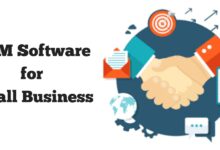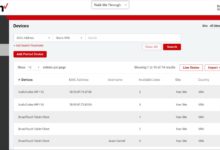B2B Prime: 7 Powerful Secrets to Skyrocket Your B2B Growth
In today’s hyper-competitive business landscape, unlocking the true potential of B2B Prime isn’t just an option—it’s a necessity. Discover how top companies leverage B2B Prime to dominate markets, boost ROI, and build unstoppable momentum.
What Is B2B Prime and Why It Matters in 2024

The term B2B Prime has emerged as a game-changer in the world of business-to-business operations. While not an officially branded service like Amazon Prime, B2B Prime refers to a strategic, premium-tier approach to B2B commerce that emphasizes speed, reliability, exclusivity, and data-driven personalization. It’s the evolution of traditional B2B models into a more agile, customer-centric ecosystem.
Defining B2B Prime in Modern Commerce
B2B Prime is not a single product or platform but a holistic framework. It integrates advanced logistics, AI-powered customer insights, subscription-based models, and priority service tiers to deliver an Amazon Prime-like experience for business clients. Think of it as premium B2B service on demand.
- It combines fast delivery, dedicated account management, and predictive ordering.
- B2B Prime platforms often feature dynamic pricing, volume discounts, and automated reordering.
- The model is especially effective in industries like manufacturing, healthcare, and wholesale distribution.
“B2B Prime isn’t about copying Amazon—it’s about reimagining B2B relationships with the same level of convenience and trust.” — Forbes, 2023
How B2B Prime Differs from Traditional B2B Models
Traditional B2B transactions are often slow, manual, and relationship-dependent. In contrast, B2B Prime introduces automation, scalability, and self-service capabilities. Where legacy systems rely on phone calls and spreadsheets, B2B Prime uses integrated platforms that sync inventory, procurement, and payment systems in real time.
- Speed: Orders processed in minutes, not days.
- Transparency: Real-time tracking and inventory visibility.
- Personalization: AI-driven recommendations based on past behavior.
For example, companies like Grainger and Fastenal have adopted B2B Prime-like models, offering same-day shipping, digital catalogs, and automated replenishment for enterprise clients.
The 7 Core Pillars of a Successful B2B Prime Strategy
To truly harness the power of B2B Prime, businesses must build their operations around seven foundational pillars. These are not just features—they are strategic imperatives that separate market leaders from the rest.
1. Lightning-Fast, Reliable Delivery
In the B2B Prime model, delivery speed is non-negotiable. Businesses expect the same urgency they get in B2C. Whether it’s MRO (maintenance, repair, and operations) supplies or raw materials, delays can halt production lines and cost thousands.
- Same-day or next-day delivery for critical items.
- Dedicated logistics partners with B2B-specific routing.
- Real-time shipment tracking with proactive delay alerts.
According to a McKinsey report, 68% of B2B buyers now expect delivery within 24 hours—up from 32% in 2019.
2. Subscription and Auto-Replenishment Models
One of the most powerful aspects of B2B Prime is the shift from transactional to subscription-based relationships. By enabling automatic reordering based on usage data, companies reduce friction and ensure continuity.
- Smart sensors trigger reorders when stock is low.
- Customizable delivery schedules based on production cycles.
- Volume-based pricing that rewards long-term commitment.
For instance, Honeywell offers automated replenishment for industrial safety gear, integrating with client inventory systems to prevent downtime.
3. AI-Driven Personalization and Predictive Analytics
B2B Prime leverages artificial intelligence to anticipate customer needs. Instead of waiting for an order, the system predicts what a client will need—and when.
- Machine learning analyzes past orders, seasonality, and market trends.
- Personalized dashboards show recommended products, cost-saving bundles, and usage insights.
- Predictive maintenance alerts help clients avoid equipment failure.
“AI in B2B commerce will drive 40% of all purchasing decisions by 2025.” — Gartner, 2023
How B2B Prime Transforms Customer Experience
The customer experience (CX) in B2B has long been overlooked. But with B2B Prime, companies are redefining what it means to serve business clients with the same care as retail consumers.
Seamless Omnichannel Access
B2B Prime platforms offer a unified experience across web, mobile, and even voice-enabled devices. Buyers can place orders from a tablet on the factory floor or via a corporate procurement portal.
- Single sign-on (SSO) integration with ERP systems like SAP or Oracle.
- Mobile apps with barcode scanning for quick reordering.
- Chatbots and AI assistants available 24/7 for support.
This seamless access reduces procurement time by up to 60%, according to a Deloitte study.
Dedicated Account Management and Proactive Support
B2B Prime isn’t just digital—it’s also human. High-tier clients receive dedicated account managers who act as strategic partners, not just sales reps.
- Monthly business reviews to optimize spending.
- Proactive alerts about supply chain disruptions.
- Custom training on new products or platforms.
This hybrid model—technology + human touch—builds deeper loyalty and reduces churn.
Leveraging B2B Prime for Scalable Growth
Scaling a B2B business has always been challenging due to complex sales cycles and long onboarding. B2B Prime removes many of these barriers by standardizing and automating key processes.
Reducing Sales Cycle with Digital Onboarding
Traditional B2B onboarding can take weeks. B2B Prime platforms use digital workflows to get clients up and running in hours.
- Automated credit checks and contract signing.
- Instant access to pricing tiers and product catalogs.
- Integration with existing procurement software via APIs.
Companies like Shopify B2B have built onboarding tools that cut setup time by 75%.
Expanding Market Reach with Global Logistics
B2B Prime enables businesses to serve international clients with the same efficiency as local ones. Through partnerships with global logistics providers, companies can offer consistent delivery standards worldwide.
- Localized pricing and currency support.
- Compliance automation for import/export regulations.
- Regional fulfillment centers to reduce shipping times.
This scalability is crucial for mid-sized firms aiming to compete with multinational corporations.
B2B Prime in Action: Real-World Case Studies
Theoretical benefits are one thing, but real-world results prove the power of B2B Prime. Let’s look at three companies that transformed their operations using B2B Prime principles.
Case Study 1: Grainger’s Rapid Delivery Network
W.W. Grainger, a leading industrial supplier, launched its “Rapid Delivery” program—a cornerstone of its B2B Prime strategy. The program offers same-day or next-day shipping on over 100,000 SKUs.
- Invested in regional distribution centers near major industrial hubs.
- Integrated with client ERP systems for automated ordering.
- Result: 30% increase in customer retention and 22% higher average order value.
Learn more at Grainger’s Rapid Delivery Page.
Case Study 2: Amazon Business and the B2B Prime Mindset
Amazon Business is perhaps the most direct example of B2B Prime in action. It offers Prime-like benefits—fast shipping, business-only pricing, and multi-user accounts—to millions of business buyers.
- Over 12 million businesses use Amazon Business globally.
- Prime for Business membership includes free two-day shipping.
- AI-powered tools help buyers manage budgets and compliance.
According to Amazon, businesses using Prime for Business see a 40% reduction in procurement time.
Case Study 3: Siemens’ Digital Procurement Platform
Siemens implemented a B2B Prime-style digital procurement system for its internal operations and external suppliers. The platform uses AI to predict part needs and automate orders.
- Reduced inventory costs by 18%.
- Cut supplier lead times by 35%.
- Enabled real-time collaboration with 5,000+ suppliers.
The success led Siemens to offer the platform as a B2B Prime solution for other manufacturers.
Overcoming Challenges in Implementing B2B Prime
While the benefits are clear, adopting a B2B Prime model isn’t without hurdles. Companies must navigate technological, cultural, and financial challenges to succeed.
Integration with Legacy Systems
Many B2B companies still rely on outdated ERP or inventory systems that don’t support real-time data exchange. Integrating these with modern B2B Prime platforms requires careful planning.
- Use middleware solutions like MuleSoft or Zapier for API connectivity.
- Phase in upgrades to avoid operational disruption.
- Prioritize integration with high-impact departments (e.g., procurement, logistics).
A 2023 IBM survey found that 61% of B2B firms cite system integration as their top barrier to digital transformation.
Data Privacy and Security Concerns
B2B Prime relies on sharing sensitive data—order history, inventory levels, financial terms. Ensuring this data is secure is critical.
- Implement end-to-end encryption and multi-factor authentication.
- Comply with GDPR, CCPA, and industry-specific regulations.
- Conduct regular security audits and penetration testing.
One breach can destroy trust, so security must be baked into the B2B Prime architecture from day one.
The Future of B2B Prime: Trends to Watch in 2025 and Beyond
The B2B Prime model is still evolving. As technology advances and customer expectations rise, new trends are shaping its future.
Rise of B2B Marketplaces with Prime Benefits
Just as Amazon dominates B2C, B2B marketplaces like Alibaba, Uline, and Amazon Business are offering Prime-like experiences—fast shipping, verified suppliers, and buyer protection.
- These platforms aggregate suppliers, giving buyers more choice.
- They handle logistics, payments, and customer service, reducing friction.
- Expect more niche marketplaces (e.g., for medical supplies or construction materials) to emerge.
AI-Powered Procurement Assistants
The next frontier is AI agents that don’t just recommend products but negotiate prices, place orders, and manage supplier relationships autonomously.
- These assistants learn from past behavior and market conditions.
- They can alert buyers to cost-saving opportunities or supply risks.
- Early adopters report up to 50% time savings in procurement.
Companies like Coupa are already developing AI procurement suites that embody the B2B Prime vision.
Sustainability as a Core Feature of B2B Prime
Modern B2B buyers care about sustainability. Future B2B Prime platforms will include carbon footprint tracking, eco-friendly packaging options, and green logistics.
- Offer carbon-neutral shipping as a default option.
- Highlight suppliers with strong ESG (Environmental, Social, Governance) ratings.
- Provide sustainability reports with every order.
A PwC report shows that 73% of B2B decision-makers consider sustainability when choosing suppliers.
What is B2B Prime?
B2B Prime is a strategic approach to business-to-business commerce that emphasizes speed, reliability, automation, and personalized service—similar to Amazon Prime but tailored for enterprise clients. It includes features like fast delivery, subscription models, AI-driven insights, and seamless digital experiences.
How does B2B Prime improve customer retention?
B2B Prime improves retention by reducing friction in the buying process, offering predictable pricing, and providing proactive support. Clients stay because they save time, reduce risk, and get a superior experience compared to traditional suppliers.
Can small businesses implement B2B Prime?
Yes. While large companies may have more resources, small businesses can adopt B2B Prime principles through third-party platforms like Shopify B2B, Amazon Business, or specialized logistics providers. The key is focusing on speed, reliability, and customer experience—even at a smaller scale.
Is B2B Prime only about faster shipping?
No. While fast delivery is a key component, B2B Prime encompasses much more: automated ordering, data-driven personalization, omnichannel access, dedicated support, and sustainability. It’s a holistic strategy to elevate the entire B2B relationship.
What industries benefit most from B2B Prime?
Industries with high-volume, repeat purchases benefit most—such as manufacturing, healthcare, construction, and wholesale distribution. However, any B2B sector that values efficiency and reliability can adopt B2B Prime principles.
In conclusion, B2B Prime is not a passing trend—it’s the future of B2B commerce. By embracing its core pillars, companies can achieve faster growth, stronger customer loyalty, and a sustainable competitive edge. Whether you’re a supplier, distributor, or enterprise buyer, understanding and leveraging B2B Prime is essential for thriving in the digital economy. The time to act is now.
Further Reading:






